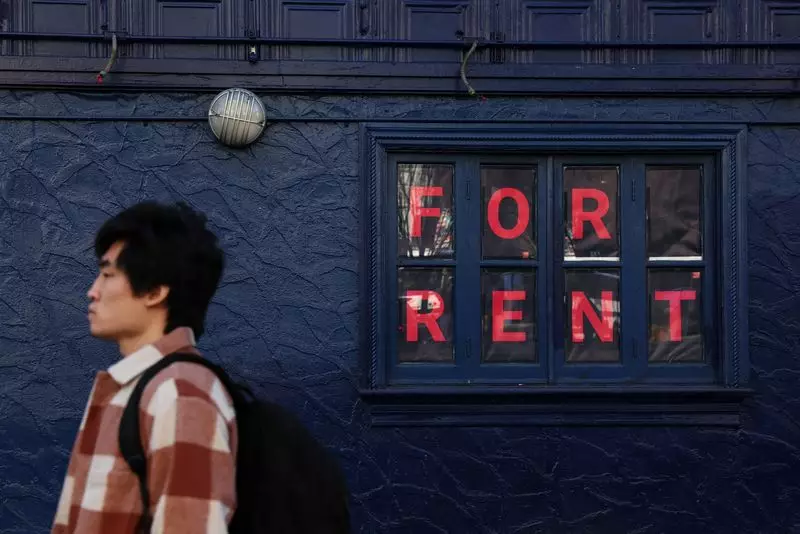Recent insights from the Federal Reserve Bank of Cleveland underscore a lingering concern for consumers: the phenomenon of rent inflation is unlikely to fade anytime soon. According to their findings, projected rent inflation is expected to remain elevated, surpassing the pre-pandemic average of around 3.5% and maintaining this rate at least until mid-2026. This backdrop sets a formidable stage for price stability efforts in the broader economy, presenting obstacles as the Federal Reserve seeks to reinstate its inflation target of 2%.
The study reveals a troubling disparity between newly negotiated rental contracts and the rates applied to existing leases—a gap that has notably widened since the onset of the pandemic. Specifically, the analysis indicates an estimated rent differential nearing 5.5% as of September 2024. This suggests that tenants currently under existing agreements could face significant upward adjustments as new rental prices continue to assert dominance, creating persistent inflation pressures.
The dynamics of the rent inflation landscape point to a complex interplay between new market rates and the lagging adjustments for existing renters. In recent times, newly signed leases have showcased remarkable increases, a trend that has not yet permeated the rent structures for long-standing agreements. As a result, many tenants remain shielded from the immediate impacts of soaring rental prices, but this temporary reprieve could evolve into a burdensome reality if market conditions do not stabilize.
Economists emphasize that the slow transition of new rent hikes to existing contracts may signal a protracted period of elevated rent inflation. As noted by Cleveland Fed economists, the timeframe for this adjustment could be extensive, leading to a situation where rental costs continue to inflate, thus buffering the overall decline in consumer pricing.
In response to these challenges, the Federal Reserve has embarked on a strategy to reverse rate hikes, hoping to facilitate smoother economic recovery. Central bankers are optimistic that easing monetary conditions will eventually translate into more manageable pricing in the housing market, particularly as rent inflation gradually declines. Recent reports speculate that the annualized rent growth has shown signs of deceleration, dropping from 6.8% in 2023 to 4.6% for the year up to September. These trends may hint at a cooling market that could favor both current and prospective tenants in the long run.
In a note released on October 10, research analyst Omair Sharif emphasized that this decrease in rental growth could lead to a decline in the housing component of overall price indexes, offering a glimmer of hope for the Federal Reserve’s inflation goals. Supporting Sharif’s assessment, St. Louis Fed President Alberto Musalem expressed confidence that inflation rates could reach the 2% benchmark within the next few quarters, provided these housing trends continue.
Despite these cautious optimistic signals, some Federal officials remain wary of the “stickiness” associated with shelter prices. Notably, Boston Fed President Susan Collins articulated concerns regarding the resilient nature of shelter inflation, as it continues to hover above its pre-COVID-19 levels. To Collins’s point, the prevailing prices of existing leases are struggling to align with the markedly lower rates of new market rents. This enhancement in stability could reflect a broader correction in the housing market, aligned with adjustments in labor dynamics and job market trends that have also moderated during recent months.
As new rent increases stabilize, Collins predicts that these adjustments will eventually lead to a corresponding easing in rent prices for lease renewals. This perspective might hinge on the broader economic recovery narrative and the Fed’s ability to navigate the complexities of monetary policy amidst continuously evolving housing dynamics.
While certain indicators suggest a potential turnaround in rent inflation, the path ahead remains fraught with challenges. The Federal Reserve must delicately balance its monetary policy decisions with the intricacies of an uneven housing market, where disparities in rental contracts could hinder an overall reduction in consumer prices. The evolving landscape of rent inflation illustrates the multi-faceted nature of economic recovery, one that demands astute navigation and profound understanding of the interplay between market dynamics and federal policies.

